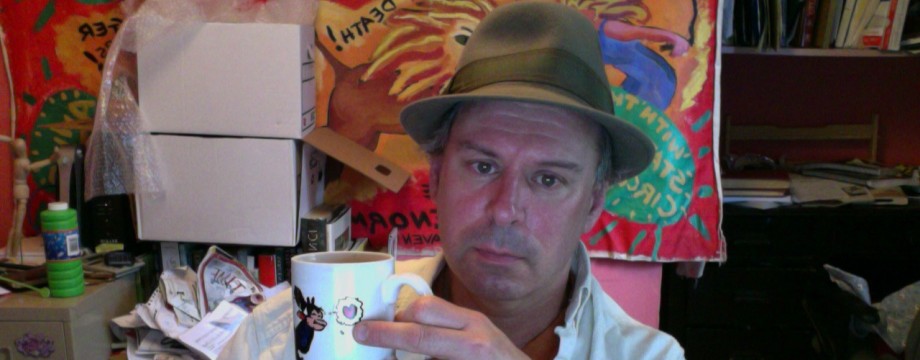JOHN PATRICK SHANLEY’S ITALIAN-AMERICAN RECONCILIATION AT THE LONG WHARF, DIRECTED BY ERIC TING, IN THE AFTERMATH OF A BALLOON BLOODBATH WHICH POPPED SEVERAL OF THE VULNERABLE ORNAMENTS. THE ACTORS BLOCKING THE VIEW OF SOME BALLOONS ON THE FLOOR ARE MICHAEL CRANE AND UNREPENTANT BALLOON TERRORIST LISA BIRNBAUM. PHOTO BY T. CHARLES ERICKSON.
The Long Wharf Theatre’s production of John Patrick Shanley’s Italian-American Reconciliation closed last weekend, but there’s a point about it still worth pondering. It’s the sharp point which pricked balloons on cue, so they popped just when actress Lisa Birnbaum started firing a staple gun in their direction. The staple gun was a stand-in for a real gun in Eric Ting’s elaborately rethought interpretation of Shanley’s script. Ting’s version turned the drama into a fantastical flashback, enacted by workers at a VFW banquet hall in the wake of a big Italian wedding.
There were actually several balloon effects, Long Wharf Technical Director Mike Wyant explained to me in a ‘phone chat on Wednesday morning. “Eric asked us to figure out a way so that when the actress [Birnbaum] shoots a staple, it gives the actor near her [John Proccacino] a motivation to move back quickly, as if he’s being shot at. Eric really liked the idea of seeing half-floating balloons—the party’s over, and they’ve lost their helium. So we decided to pop some balloons.”
The duty fell to Wyant partly because, as Technical Director, he’s in charge of how the set is built and maintained, but also because “we don’t have an Effects department. The Props department helped a lot.”
Wyant says he researched the effect for a week and half online, and discovered a variety of reliable techniques for popping balloons remotely. “There are ways of using lasers, but that wasn’t right for us. You can use old Christmas lights.” He finally settled on solenoid, a thin metal coil of wire which conducts electricity and forms an electromagnetic field. (Solenoid switches are used for starting cars.) The wire was strategically placed on the balloon so that when electricity shot through it, the charge would instantly melt the thin balloon casing. Lisa Birnbaum and Stage Manager Megan Schwarz Dickert worked out a visual cue for just before the balloon needed to burst, then Dickert relayed a command to a Long Wharf stage carpenter who did the honors.
Pop!
The trick worked splendidly, Wyant says, except for a shaky preview performance or two while the crew was still getting used to the apparatus. “The funniest way it worked was when a balloon melted but didn’t pop. It just slowly deflated. The effect still worked, but it was pretty funny.”
That was how the character Janice, brandishing a staple gun atop a stepladder (a scene originally written with a zipgun and balcony in mind) punctuated her anger at an intrusion by Aldo, the best friend of her ex-husband in Italian-American Reconciliation’s second act.
Elsewhere in the play, it was thought that the bedraggled Aldo could use a balloon effect of his own. So a low-flying balloon, attached to a chair in the banquet hall set, was rigged using a whole different wiring method. This time Wyant used Nichrome wire, made of an alloy with a lot of nickel in it. Nichrome wire can get very hot very fast, so it’s used in ingnition systems to launch model rockets and fireworks. A long wire was laid under the stage carpet—and an extensive carpet it was, covering the stage floor all the way out to under the first row of auditorium seats, really nailing the inclusive feel of Scott Bradley’s set design. The wire wound up into the stage furniture, where it was disguised as a bit of ribbon and tied to a balloon. When a 12 volt battery was switched on, it sent a charge straight to the doomed latex balloon.
And Pop! goes the Italian-American Reconciliation.

